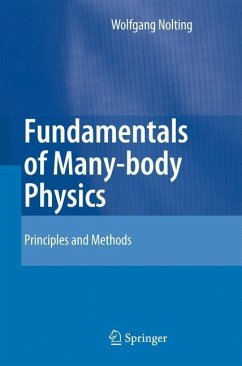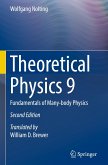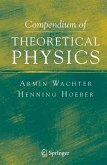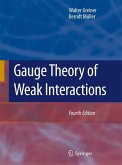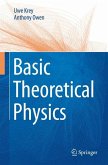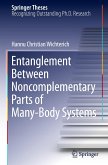The goal of the present course on "Fundamentals of Theoretical Physics" is to be a direct accompaniment to the lower-division study of physics, and it aims at providing the ph- ical tools in the most straightforward and compact form as needed by the students in order to master theoretically more complex topics and problems in advanced studies and in research. The presentation is thus intentionally designed to be suf?ciently detailed and self-contained - sometimes, admittedly, at the cost of a certain elegance - to permit in- vidual study without reference to the secondary literature. This volume deals with the quantum theory of many-body systems. Building upon a basic knowledge of quantum mechanics and of statistical physics, modern techniques for the description of interacting many-particle systems are developed and applied to various real problems, mainly from the area of solid-state physics. A thorough revision should guarantee that the reader can access the relevant research literature without experiencing major problems in terms of the concepts and vocabulary, techniques and deductive methods found there. The world which surrounds us consists of very many particles interacting with one another, and their description requires in principle the solution of a corresponding number ofcoupledquantum-mechanicalequationsofmotion(Schrodinger ¨ equations),which,h- ever, is possible only in exceptional cases in a mathematically strict sense. The concepts of elementary quantum mechanics and quantum statistics are therefore not directly applicable in the form in which we have thus far encountered them. They require an extension and restructuring, which is termed "many-body theory".
From the reviews:
"This valuable and self-contained presentation of many-body theory is centred on solid state physics and is mainly meant for undergraduate students. ... The book and its various chapters are organized in a detailed and logic way. ... After the presentation of the relevant theoretical tools, models and examples are treated with great care. ... all calculations are performed in extreme detail, and each section is enriched with many exercises, all solved at the end of the book." (Bassano Vacchini, Zentralblatt MATH, Vol. 1187, 2010)
"Primarily directed towards students with a firm background in quantum and statistical mechanics, the book may also assist researchers in getting familiar with the application of second quantized methods and Green's functions to solid state physics. ... the copious amount of self-tests and completely worked out exercises yields a unique textbook for all students and readers who seriously strive to graduate or advance in the field of condensed matter theory." (H. Hogreve, Mathematical Reviews, Issue 2012 b)
"This valuable and self-contained presentation of many-body theory is centred on solid state physics and is mainly meant for undergraduate students. ... The book and its various chapters are organized in a detailed and logic way. ... After the presentation of the relevant theoretical tools, models and examples are treated with great care. ... all calculations are performed in extreme detail, and each section is enriched with many exercises, all solved at the end of the book." (Bassano Vacchini, Zentralblatt MATH, Vol. 1187, 2010)
"Primarily directed towards students with a firm background in quantum and statistical mechanics, the book may also assist researchers in getting familiar with the application of second quantized methods and Green's functions to solid state physics. ... the copious amount of self-tests and completely worked out exercises yields a unique textbook for all students and readers who seriously strive to graduate or advance in the field of condensed matter theory." (H. Hogreve, Mathematical Reviews, Issue 2012 b)

